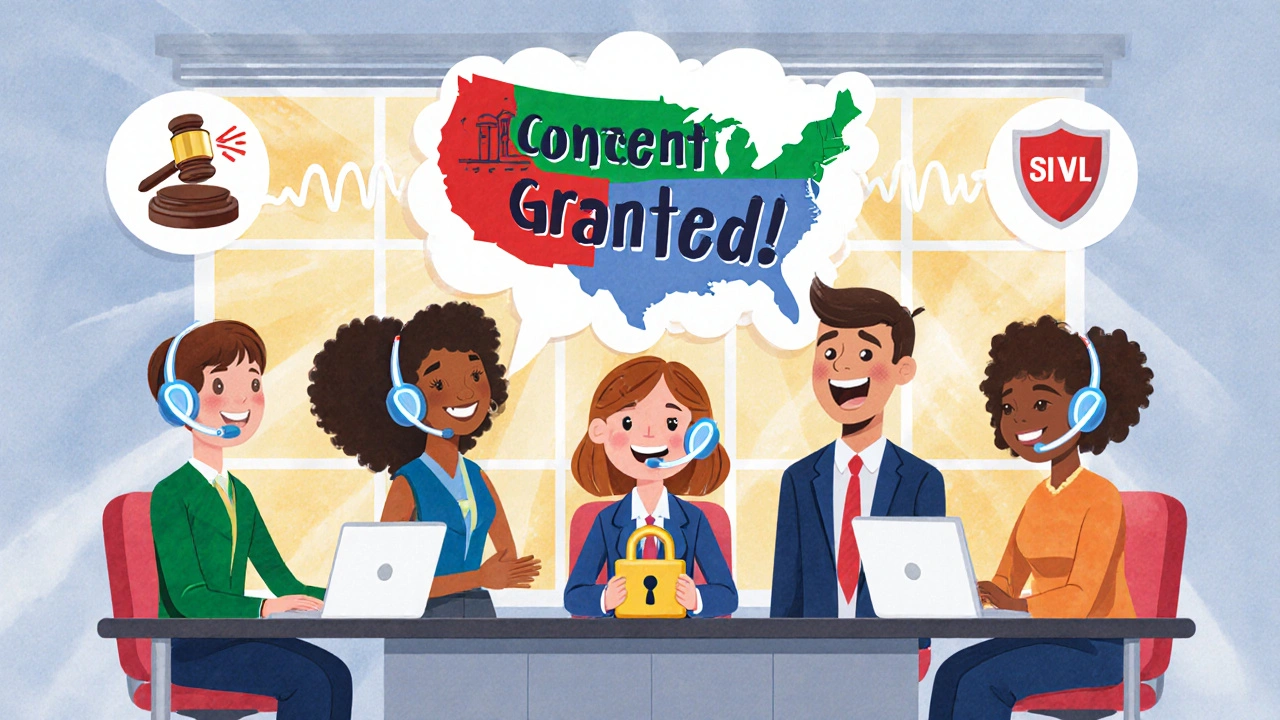Call Recording Compliance: Legal Rules, Best Practices, and Tools You Need
When you record a call, you’re not just capturing audio—you’re handling sensitive personal data. That’s why call recording compliance, the legal framework governing when and how businesses can record phone conversations. Also known as call monitoring laws, it varies by state, country, and even industry. One wrong move can cost you thousands in fines, lawsuits, or damaged trust. It’s not about being paranoid—it’s about being smart.
Most places require either one-party consent, where only one person in the call needs to know it’s being recorded or two-party consent, where everyone involved must agree. In the U.S., states like California, Illinois, and Washington demand two-party consent. In the EU, GDPR adds layers: you need a clear legal basis, proper storage limits, and the right to delete recordings on request. And if you’re recording customer service calls for training? You still need to tell people. No hidden buttons, no silent triggers. Even if your VoIP system lets you record with a click, the law doesn’t care how easy it is—it cares if you followed the rules.
Compliance isn’t just about avoiding penalties. It’s about building trust. Customers don’t mind being recorded if they know why and how their data is used. That’s why top companies use call recording software, tools that automatically notify callers, encrypt recordings, and log consent. These systems don’t just record—they help you stay compliant by tagging recordings with timestamps, user roles, and consent status. And if you’re using a cloud VoIP provider like OpenPhone or Microsoft Teams, check if their recording features include built-in compliance controls. Most don’t. You might be relying on a tool that’s technically capable but legally risky.
There’s no magic checklist that works everywhere. But there are simple steps: always notify callers at the start of the call, keep recordings secure and encrypted, limit access to only those who need them, and delete them when they’re no longer needed. Train your team. Document your policy. And don’t assume that because you’re in a one-party state, you’re safe—clients or partners in two-party states might still hold you to stricter rules. This isn’t IT’s problem. It’s your business’s problem.
The posts below cover everything from how to set up recording legally in your VoIP system, to which codecs and storage methods affect compliance, to real cases where companies got fined for skipping consent. You’ll find practical guides on configuring your software, choosing providers with built-in compliance, and avoiding the traps most businesses don’t even know exist. No theory. No jargon. Just what you need to record calls without risking your business.
